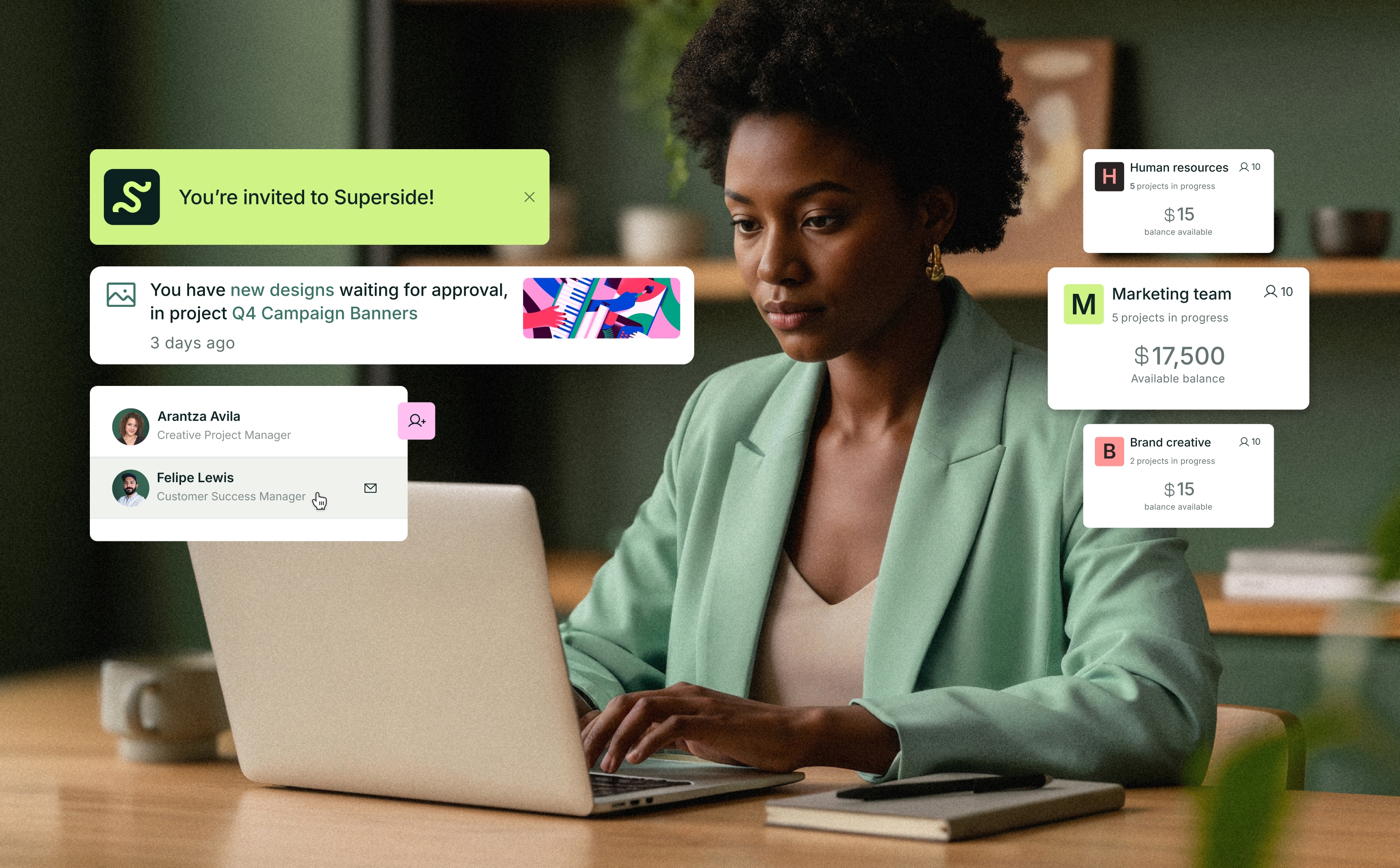
With more than 2 billion monthly active users, YouTube’s user base is almost as large as Facebook’s – and your company may be missing out on a huge digital advertising opportunity by not showing up on the platform.
YouTube is essentially a video search engine. When you advertise on YouTube, you have access to keyword targeting features across Google properties, including search history outside of YouTube. Marketers can then use this data, with keyword research, to target in-market and custom-intent audiences on the video platform.
However, if you feel a little intimidated about making video ads on YouTube, you’re not alone. You probably have a ton of questions like:
- What makes a good YouTube ad?
- How do I make a creative video ad?
- How can I improve my YouTube ad performance?
And as we’re sure you know, creating compelling video content often takes more time, money and resources than other ad formats, so you want to make sure you know what you’re getting into before you dive in.
Lucky for you, we know a thing or two about how to make video ads on YouTube. Inside this article, you’ll get a ton of helpful tips and YouTube ads best practices that will help you plan your next YouTube video ad campaign and increase your odds for success.
YouTube Best Practices
Before you dive into the creative, here are some of the most important YouTube video ad best practices you should keep in mind.
1. Keep video ads between 15 and 60 seconds
We’ve covered YouTube video length best practices for each ad format in another article, but in general, if your goal is direct response (i.e., to get viewers to take action quickly), a video ad length of 15 to 60 seconds is the sweet spot. According to an experiment by Google, a 30-second ad cut had the highest view-through rate. The company also found that play rates drop off significantly after 45 seconds. Don't push past 60 seconds if you can help it and optimize your videos to be closer to the 30 second mark for maximum potential.
2. Design with YouTube viewing habits in mind
Think sound on and mobile-first when designing YouTube ads. Ninety-six percent of YouTube video ads are watched with the sound on. Plus, Google research found that users who see and hear ads experience higher brand awareness and ad recall than audio or visual-only ads. Additionally, almost half (40.9%) of YouTube views are mobile. However, this number has been shrinking recently (down from 49% in 2019) as people spend more time watching YouTube on their TVs, so consider creating ads that can work for both small and larger screens.
3. Choose a custom thumbnail that best represents your content
When you create an in-feed video ad, you'll see several video stills or "thumbnail images" to choose from. These stills are the first thing YouTube users see before clicking on your promotion, so you need to get it right. Having an eye-catching thumbnail can make the difference between someone clicking on your video or passing it by.
Aim to select a still that highlights your content best and aligns well with the content in your promotional text or keywords. For example, if your video features someone using your software, choose a still that captures this moment. This way, your ad will make sense and be more enticing to anyone searching for related videos.
4. Consider where you want to send viewers next
YouTube recommends directing ad traffic to your brand’s YouTube channel or a website with additional video content. Since YouTube viewers are on the platform to watch video content, you’ll get more viewer engagement if you direct them to a destination that allows them to continue their viewing experience. If you need to lead them to a landing page, make sure it’s relevant to the content of your ad.
This post is only one part of a much larger ad design guide, which covers topics like Facebook advertising, ad design predictions and more. Don’t miss out and download the guide today
YouTube Creative Best Practices
Is there a magic formula for making sure your ad shows and viewers watch the entire thing and click through to your website? Unfortunately, no, but we can offer some solid YouTube creative best practices that will increase the likelihood that your ad will be compelling enough to watch.
Here are some creative best practices for producing the best YouTube ad you can make.
1. Use a story arc
You’re probably familiar with the classic story arc:
Great YouTube ads follow a similar narrative arc but repurposed to showcase your product or service:
The formula may appear dry at first glance, but it doesn’t have to be. This ad by ClickUp plays with this formula in the best way: humor.
Some people take a shortcut and lop off the first step: establishing the problem. Only do this if the problem you’re solving is well-known among your audience. If you’re still educating your audience about the problem your product is solving, we don’t recommend taking this shortcut.
This TurboTax ad ranked fifth in YouTube’s 2020 leaderboard for most watched ads of the year. They don’t need to establish the problem they’re solving––people already think doing their taxes is a nuisance.
2. Quicken the pace
A YouTube ad is different from a short film: you don’t have the luxury of lingering on a beautiful shot, no matter how visually appealing it is. You need to hook your viewer in quickly if you want them to watch to the end and not hit that dreaded ‘skip ad’ button.
Successful YouTube ads move quickly, and the first few seconds are your prime real estate. Research from Magna Global found that whether viewers skip your ad or not, you need to associate your brand as the solution to a need or pain point with the first seven seconds for it to make an impact.
3. Use tight framing to focus on faces and objects
Again, you won’t have time for sweeping wide shots in your YouTube ads. Plus, they aren’t very conducive to showcasing your product. Instead, you’ll want to use as many close-up shots as possible to amplify your solution. According to Google, featuring "smiling characters" and recognizable faces (such as a celebrity or popular YouTube creator) in the first five seconds tends to result in higher viewership and better brand lift.
4. Use clear but creative CTAs
You should always be clear about what action you want viewers to take, whether that’s watching another video or subscribing to your channel, but that doesn’t mean you can’t have some fun with your CTAs. For example, McDonald’s in Malaysia used a little reverse psychology in their call-to-action, telling viewers not to search for a product, knowing that would spark curiosity and encourage them to do just that.
Case Study: How Webflow Scales High-Quality, Feature-Focused Videos on YouTube
- Industry: Content management system
- Mission: Webflow empowers designers to build professional, custom websites in a completely visual canvas.
- Target audience: Web designers
- Size of creative team: 10+
The goal
- North star metric: Signups
- Additional signals: Plan upgrades and retention rates
The creative concept
- Webflow knows their audience: technical web designers who live by terms like “visual CMS,” “custom content structure,” and “semantic HTML, CSS and JavaScript.” They also know web designers are focused on “the how” and that the experience of creating is almost as important as the end result.
- Through keyword targeting, language mirroring and feature-focused video ads, Webflow achieved product-channel fit on YouTube by overwhelming their audience with feature-rich screens that show exactly how work is done on the platform.
Feature overview: “Meet the design tool from the future”
Feature drill down: Interactions
How Webflow succeeds on YouTube
Webflow tested ads on multiple platforms, including Instagram, Pinterest, Facebook and more. However, YouTube generated the highest amount of signups for Webflow because of the technical nature of Webflow’s audience and the platform’s search keyword targeting ability.
But how do you create high-quality YouTube ads that scale? Here’s how they did it:
1. Webflow builds custom audiences based on technical keywords
Through language mirroring, Webflow’s audience targeting is laser-focused on middle-of-funnel product awareness and readiness to buy through language mirroring. Keyword research is done and from there technical keywords are then further reinforced within the ad creative, so the audience feels understood and confident in Webflow as a solution.
2. Webflow runs ads within an environment that encourages exploration
Webflow tested sending users to a dedicated landing page versus a homepage, and they were surprised to discover that their homepage consistently outperforms landing pages for signups.
Also, when users are allowed to explore the homepage, Webflow sees higher retention rates after a signup from a YouTube ad.
3. Webflow uses in-product metrics to determine ad creative
With in-product metrics, Webflow discovered designers love their interactions feature, so they replicated their original product feature ad as a template and repurposed it for an ad on interactions. From there, they tested variables like the background color (black won) to no voiceover versus voiceover (voiceover won) to finetune the ad template for scale.
The Results
Views: 9 million+
YouTube as a channel is about showing people how to accomplish a task to make their lives easier. On YouTube, you need to overwhelm people with visuals of all the amazing things your product can do.
The Key to YouTube Video Ad Success? Find What Works For You
Like any ad campaign, YouTube best practices should just be your starting point. Once you learn the rules, be like Webflow and test your campaigns to know which ones to break. Who knows – a 45-second ad could work better for your target audience than a 30-second ad. A sound-off campaign could help you stand out from the crowd. You’ll never know until you test them out. And if you need more direction for other ad formats or ad types, be sure to download our complete Ad Design Guide for more tips, advice, and best practice to get you started.












